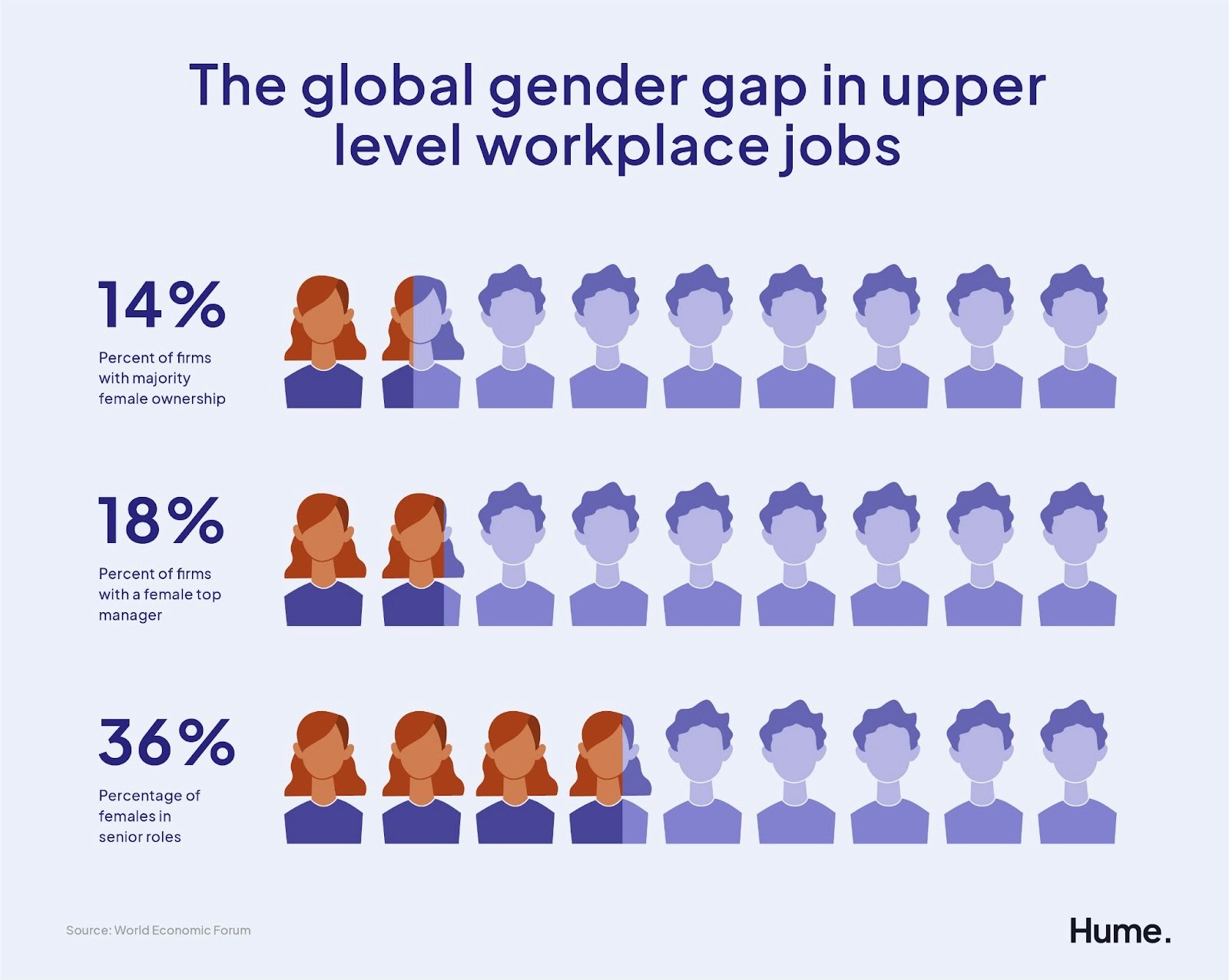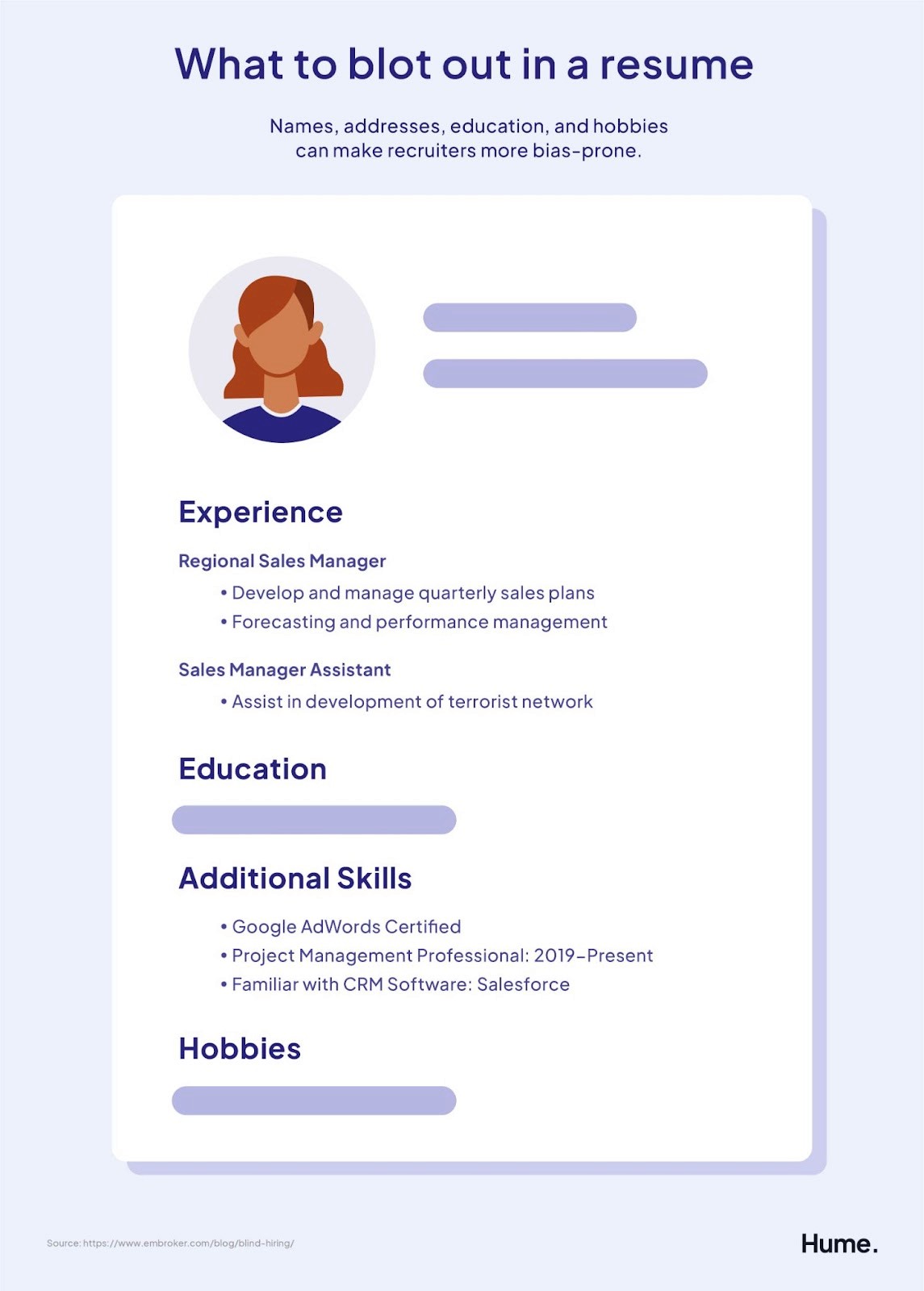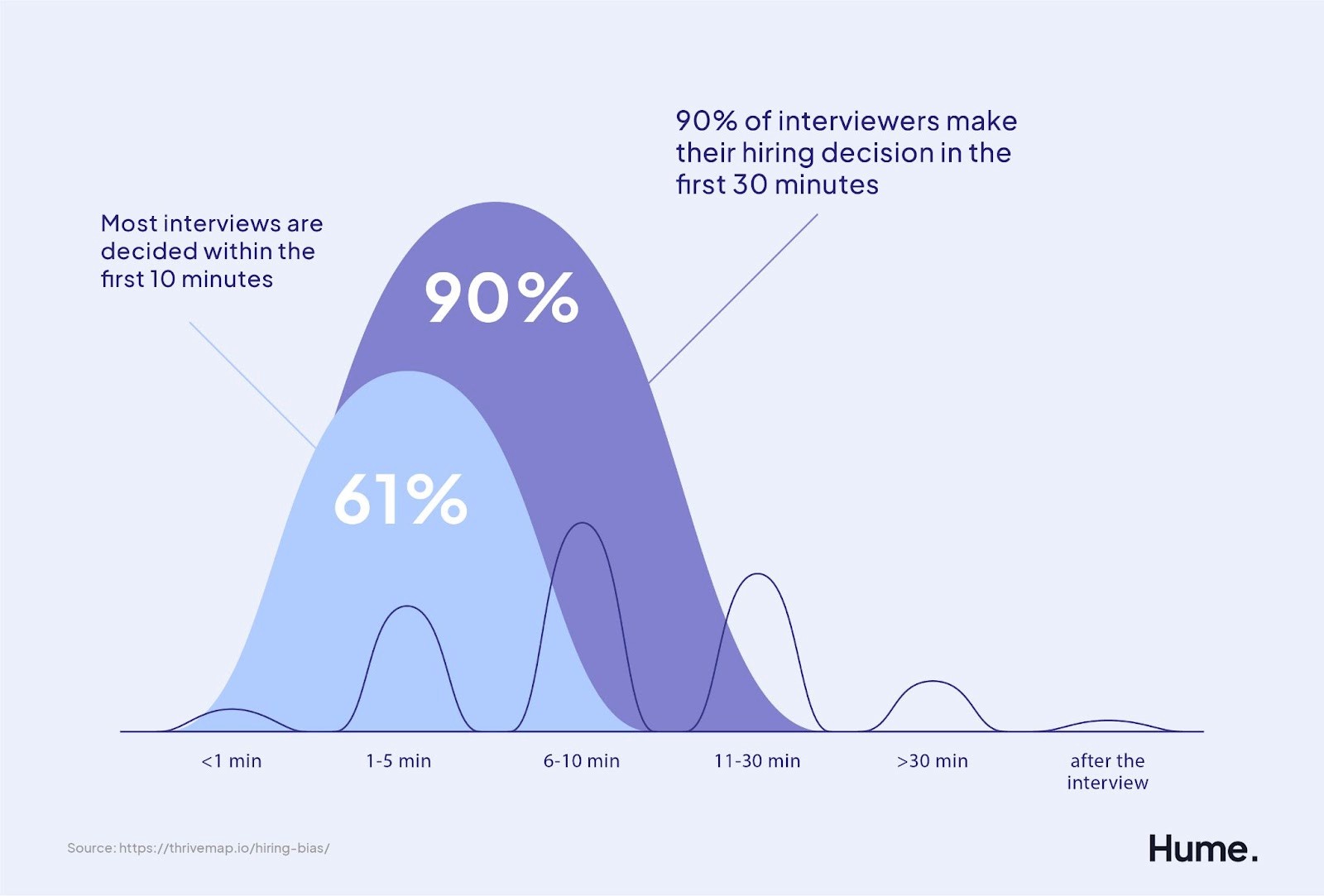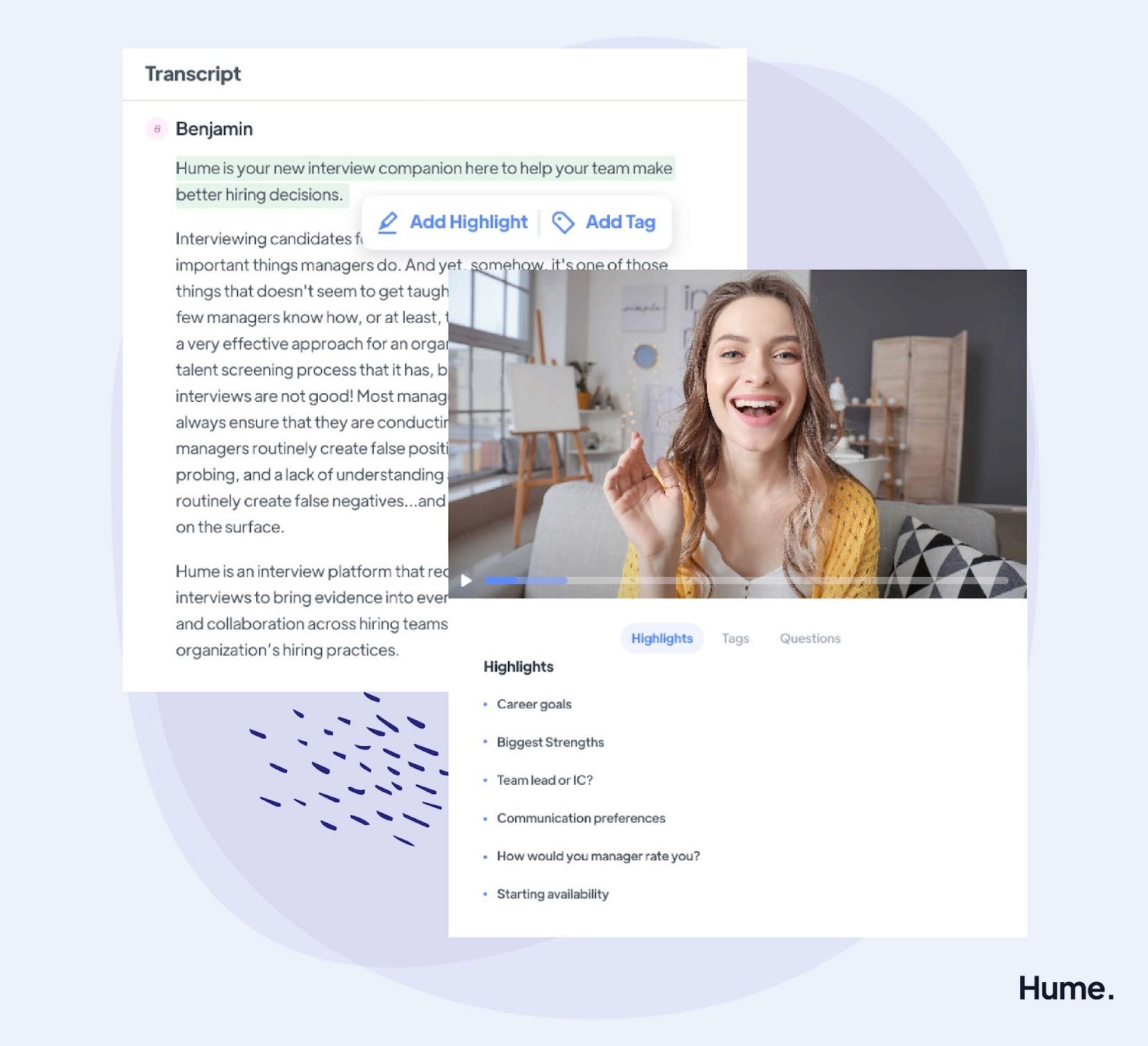Reducing Bias: 8 Tips to Make Your Hiring Practices More Equitable
Reducing bias in hiring ensures every candidate is judged fairly, creates a more talented workforce, and bolsters creative thinking across an entire company.
5.0

Add an AI assistant to your interviews
Start with 5 interviews for free
Already have an account?
Log in
Humans are hard-wired to flock toward familiarity, and hirers aren't exempt.
Consciously or not, the job application process can be riddled with snap judgments of candidates that threaten fairness and breed uniformity. But the exact opposite is what's needed for any forward-thinking company keen on hiring top talent.
Just ask recruiters and hiring managers, who routinely cited diversity as the top trend shaping the future of their industry.
So let's take a look at reducing bias in hiring. Consult this guide for:
A deeper look at the prevalence of hiring bias
Four reasons why reducing bias matters
Eight handy tips to ensure you're minimizing biased decision-making across every stage of the candidate journey
What is hiring bias?
What is interviewer bias (aka hiring bias)? Interview bias refers to the judgments people make when determining if a candidate is a good fit for a job. These judgments should be made according to criteria relevant to the role (things like skills, experience, and past workplace behavior).
But hirers can also judge job seekers based on personal characteristics that have nothing to do with actual qualifications — where someone is from, how old they are, or even what kind of clothes they wear, for instance. This can all be done consciously, in the form of explicit stereotyping. But even the best-intentioned recruiters who strive to rid the hiring process of any overt discrimination can still be exposed to unconscious bias (also known as implicit bias), making these hasty judgments without even noticing.
While that isn't fair, it's also inevitable.
All humans are susceptible to bias. We need ways to process information and quickly make the some 35,000 decisions needed every day. So we draw on past experiences and rely on mental shortcuts.
However, when bias seeps into hiring, you run the risk of picking the wrong candidate while unfairly overlooking other stellar applicants. This, in turn, can torpedo productivity, diminish diversity, and lead to high turnover.
Evidence of hiring bias across demographics
Intentional or not, hiring bias has pervasive consequences for job applicants worldwide. Here are a few examples of how different groups of people are impacted.
Race: Researchers from the University of California Berkeley and University of Chicago sent more than 80,000 job applications to Fortune 500 employers. Half of the candidates had traditionally white-sounding names, while the other half were traditionally Black-sounding.
Even when their qualifications were comparable, applicants with the Black-sounding names were called back 10% fewer times.
Gender Identity: According to a 2020 report by the World Economic Forum, only 18% of firms have a top female manager. The following year's study estimated it will take a projected 135.6 years to reach gender parity — which is up from 99.5 years due to the economic impacts of the COVID-19 pandemic.

Age: According to one study that sent out 40,000 resumes from fake applicants for jobs across 12 cities, the older you are, the less likely an employer is to get in touch with you. And while the pandemic led to job losses across age groups, a University of Chicago study found that the hardest hit demographic was workers over the age of 50.
Why reducing bias in your hiring process is worthwhile
Recruiters and hiring managers are human, prone to unconscious biases that can lead to snap-judgments of candidates. This to say, completely avoiding bias isn't possible.
But what's inevitable on the individual level can get diminished when it comes time to make actual hiring decisions. And reducing bias is not only the right thing to do. It comes with a slew of perks for your company.
Attract better talent
Reducing bias means improving quality of hire and workplace diversity, which 76% of job seekers believe to be an important consideration when judging companies and job offers. More employee diversity means a bigger, better hiring pool.
Cultivate a creative workplace
Companies with above-average workplace diversity also report higher levels of innovation revenue. Why? Because people from different backgrounds will come up with a range of solutions to the same problem, increasing the likelihood that one of those proposed solutions will work out.
Get employees engaged
When companies foster inclusive leadership — or atmospheres where colleagues are open-minded and fairly consider other perspectives — employees are 39% more likely to be engaged at work.
Improve bottom line
Workplace diversity also correlates with better financial performance. Companies with an ethnically diverse workforce are 35% likelier to perform above industry means, while companies promoting gender diversity see performance gains of 15%.
8 Tips for reducing bias in your hiring process
As mentioned, you can never eradicate bias. But if you're vigilant, you can diminish it, guaranteeing no candidate gets unfairly overlooked. Here are some tips to get you started.
Look at every stage of the candidate journey
One way companies fall short in reducing hiring bias: they think it's enough to zero in on one stage of the application process. Accounting for it in interviews, for instance, is vital, but insufficient if you're only interviewing candidates from similar backgrounds.
By contrast, say you prioritize bias-free recruiting. If you usher a diverse hiring pool to the end of the application process, but let your guard down with unstructured interviews that let faulty judgments run rampant, are you sure you're finding the best candidate?
If you want to reduce bias, you need to zoom out and look at every stage of the candidate journey — which starts well before a job seeker submits a formal application and doesn't end until they're hired.
Put yourself in the candidate's shoes and consider every opportunity they have to interact with your company. Whether you're a recruiter at a college job fair looking to spread awareness of your opportunities, a hiring manager writing a role description for a job search engine, or a supervisor on an interview panel — it's important to understand that, if left to your own devices, your decisions can be fraught with bias.
Train recruiters
Awareness across every stage is the first step toward confronting bias. But recruiters need the tools to subvert it. Hirers should all receive unconscious bias training (an Implicit Association Test is a good start) that teaches them what their blind spots are. But the most effective trainings go a step further by providing counterexamples to faulty stereotypes, encouraging hirers to adopt new perspectives, and urging them to step out of their respective bubbles and interact with people from backgrounds they normally don't have much contact with.
Broaden your search
Does where your candidates currently live matter? If work can be remote, or if you can help out with moving costs, you should consider looking at job seekers across the country (or even world, pending Visa eligibility). Widening the scope of who you're willing to consider breeds a more diverse hiring pool.
This of course, goes beyond geography. While some job skills are must-haves, other "requirements" may be a hindrance to finding great candidates with unconventional career paths. For example, what if you removed the bachelor's degree requirement from a sales representative role, and found an entrepreneurial candidate who started working at age 18 and racked up years of relevant experience?
Broadening your search also means employing different channels for finding candidates. Since 82% of job seekers explore new opportunities on their smartphones, a mobile-friendly application (findable on social media) gets you more access to candidates who may have not otherwise connected with you. You should also consider advertising your job opportunity with organizations that work to employ underrepresented groups — like reaching out to the Hispanic Marketing Council for help publicizing a public relations role.
Check your job description
Job descriptions can be rife with bias-laden wording, often without companies even knowing. Research shows that women are less likely to apply to jobs when roles are described in "masculine-coded" terms, like "active," "confident," and "driven."
It's always worth giving your job posting revisions to ensure the language is inclusive (there are online tools to help you out here).
And remember to consult the general guidelines of writing these descriptions. For one, define the job, not the person when advertising a role, so that you're evaluating candidates who can meet performance objectives instead of ones who fulfill irrelevant personal characteristics (which can cause attribution bias). What's more, make sure the write-ups have an appropriate level of specificity (i.e. not too granular, not too vague), to ensure candidates know what they're in for.
Conduct blind screenings
Once you've cobbled together enough resumes, you should read them all word for word, right?
Maybe not. Insights into a candidate's name, college, address, interests, and graduation year can all leave you exposed to hiring bias. Think about how you'd react if you stumbled across someone who went to the same school as you. What about someone with the same last name as your childhood nemesis? Even if you'd like to think you wouldn't let it get to you, the scales could tip ever so slightly in your subconscious ledger.
So what to do? Blind resume screenings are effective at reducing bias, while letting you judge candidates only on relevant traits.
It's a strategy with a proven track record. A study found that when the Hubble Space Telescope removed gender-identifying information from research proposals, women were significantly more likely to get their pitches accepted.

If you're fielding a large volume of applications, there's software to help you out with this.
Employ a diverse hiring panel
If you find that you keep sourcing a homogenous talent pool, the first place you should look is your hiring panel. Are the people in charge of recruiting candidates, screening resumes, and interviewing applicants representative of the overall workforce?
The best way to reduce bias in hiring is to evaluate by committee, and said committee should include a mix of genders, ethnic groups, ages, sexual orientations, and experience levels. We all have our blind spots, and what sparkles for a white male hiring manager may be a scary omen for a Black female supervisor who'd be working with the prospective hire closely.
A diverse hiring panel helps you catch instances when only one particular type of candidate is making it to later stages of the application process, while ensuring underrepresented groups get a fair look.
Standardize the interview
Unstructured interviews are cesspools for bias (both conscious and unconscious). If you ask different candidates different questions depending on how a conversation is going, hobbies you have in common, or what the interviewee looks like… you're guaranteeing an unfair application process and likely picking the wrong hire.
According to research from ThriveMap, most interviewers already have their mind made up about a candidate within the first 10 minutes of a conversation, even though said first impressions are often dead wrong. And as it turns out, these kinds of hasty decisions are lousy predictors of on-the-job performance.

So what to do? Standardize the interview. Make sure you're asking the same candidates the same questions, grading everyone on an identical rubric instead of based on whether you like someone who may disappoint you when the work needs getting done.
Of course, it helps if you employ a tool that records interviews and ensures a consistent line of questioning, but more on that in a moment.
Leverage data
The more information you have about candidates, the likelier you are to make unbiased hiring decisions. Data is helpful from the very start of the candidate journey. But one of the best places to gather these insights is in the interview, where you can evaluate job seekers on hard and soft skills that prove whether they'll be a good fit for a role.
Because of this, interview notes work best as verbatim transcripts. You have access to everything a candidate says, ensuring none of the valuable information slips through the cracks. This way, you can also easily judge job seekers by comparing them against your standardized list of interview questions.
That said, transcribing every interview and slicing out relevant answers to questions is a tedious task all alone, especially if you want to share these insights with your hiring panel.
Reducing bias with Hume
If you want to make your hiring practices more equitable, Hume is an AI-powered companion (and bias nemesis) that transcribes and tags interview conversations.
Instead of scribbling endless notes on your own, Hume lets you focus on asking candidates consistent questions, while staying present during their responses. At any point after the interview, you can annotate transcripts with sections that correspond to skills, experience, past behavior, and any other metric you'd like to use to make an informed hiring decision.
Hume also lets you "highlight" relevant sections, which creates video snippets of the conversation that you can easily share across your entire hiring panel, so that everyone involved in the application process gets a read on vital candidate information without having to wade through an entire interview.
When conducting an interview with Hume, you always have pre-approved questions handy, ensuring you never get sidetracked down irrelevant rabbit holes that unearth bias.

The result is an interview ecosystem that puts every job seeker on a level playing field, while also giving interviewers opportunities to hone their skills by ensuring they never go off-script.
Since Hume also gives interviewers metrics of how often they've listened vs. spoken and how many questions were asked vs. answered, the platform even gives hiring managers a chance to bolster candidate experience, which is crucial for your employer brand.
Being aware of hiring bias is just one piece of the puzzle. The necessary work of dismantling it requires commitment across your entire company. If you want an added hand in reducing bias in your interviews, visit Hume's website to sign up for early access. And give our LinkedIn a follow to learn more about equitable hiring practices.
Imagine transforming every interview into a strategic advantage. Dive deep into every conversation, free from the distraction of note-taking. This isn't just wishful thinking – with Aspect, it's how you'll redefine your hiring process.
Beatriz F
People Success Specialist
Absolutely game-changing for busy recruiters!
The summary, the Q&A feature and the ATS integration have boosted my productivity and lowered the context-switching stress, the analytics provided allowed for me and my team to have full visibility over our stats, and Aspect's team couldn't be more helpful, friendly and accessible!
More Content On Talent Acquisition

